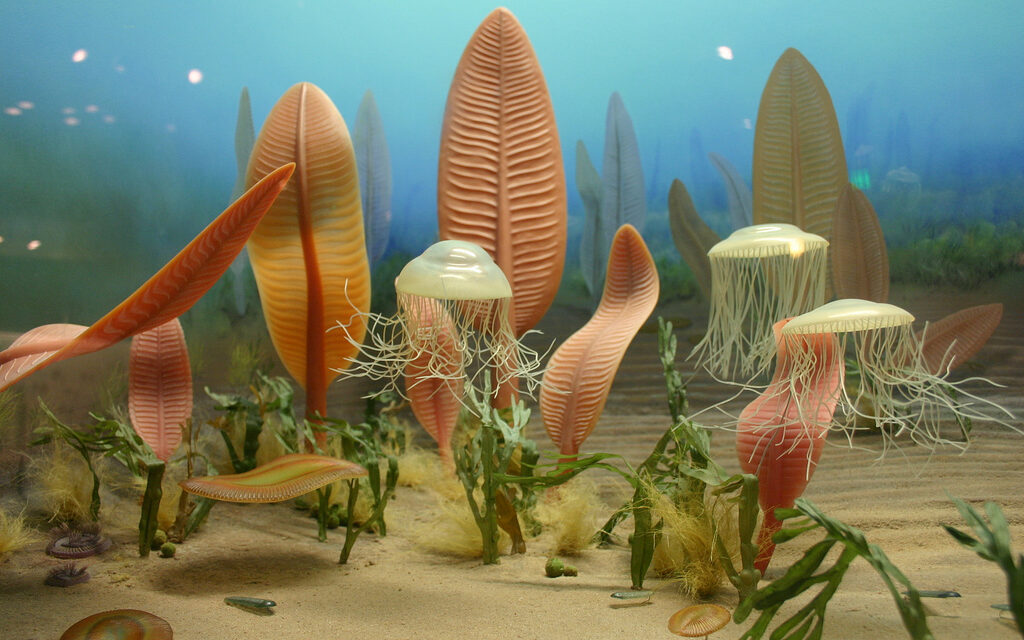New Scientist
Image: Ryan Somma
A strange 380-million-year-old fossil that was initially identified as a worm might actually be the last known survivor of an early form of life that no one fully understands. So claims one palaeontologist – but others are sceptical.
The Ediacarans, also known as “vendobionts”, are some of the earliest multicellular organisms known. They were strange, bag-like organisms just a few millimetres thick and sometimes 2 metres long, with an intricate quilted appearance. Nobody knows if they were animals, plants or something else entirely.
Ediacarans first appear in the fossil record about 600 million years ago. They are thought to have vanished about 60 million years later, shortly after animals burst onto the scene in the Cambrian explosion. It may be that those animals ate them to extinction.
However, Gregory Retallack at the University of Oregon in Eugene suspects that some vendobionts clung on in the age of animals for a long time. He thinks a mystery fossil called Protonympha might be a vendobiont – despite living 160 million years after its cousins seemingly went extinct. Read more on newscientist.com…








